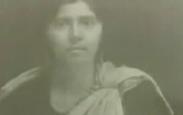Political family of Pakistan
The Jinnah family (Urdu: خاندان جناح) was a political family of Pakistan. It has played an important role in the Pakistan Movement for creation of Pakistan, a separate country for Muslims of India. The family held the leadership of All-India Muslim League, and its successor, Muslim League, until it was dissolved in 1958 by martial law.
Members of Jinnah family, Muhammad Ali Jinnah (often referred to simply as Jinnah) and Fatima Jinnah, have been important figures in the history of Pakistan. Jinnah is considered as the founder of Pakistan and served as the first Governor General of Pakistan upon independence, while Fatima played an important role in the struggle for Pakistan Movement and was the founding mother of Pakistan. Several public places, universities, and hospitals in the world have been named after Jinnah and his sister Fatima, and the former's birth and death anniversary are among the public holidays in Pakistan.[2][3]
Jinnah's family history is disputed among various sources.[4] Originally from a Khoja background,[5] they moved to Karachi from Kathiawar, Bombay Province in 1875.[7] Jinnah's paternal grandfather was from Paneli Moti village in Gondal state in Kathiawar peninsula (now in Gujarat, India).[8] Jinnah was the eldest of seven children of Jinnahbhai Poonja, a prosperous merchant, and his wife, Mithibai. His family was a member of the Khoja caste, Hindus who had converted to Islam centuries earlier and who were followers of the Aga Khan.[5] Although born to a Khoja (from Khwaja or 'noble') family who were disciples of the Aga Khan, Jinnah moved towards the Sunni sect early in life. There is evidence later, given by his relatives and associates in court, to establish that he was firmly a Sunni Muslim by the end of his life.[9]
Members of the Jinnah family
Jinnah's family was from Khoja caste, who had converted to Islam from Hinduism centuries earlier and were followers of the Aga Khan.[5]
First Generation
- Poonja Meghji. He was the last generation to give his children Hindu names. He also observed most Hindu religious rituals:[10]
- Manbai
- Valji
- Nathoobhai
- Jinnahbhai
Second generation
- Jinnahbhai Poonja.[5] (also referred to as Jina Poonja),[11][unreliable source?] a Khoja (1857–1902), was married to Mithhibai.[12][unreliable source?][5]
- m. Mithhibai
- Jinnahbhai Poonja was a prosperous merchant.[5] He moved to Karachi before Muhammad Ali Jinnah's birth. He and his wife had 7 children to whom they stopped giving Hindu names, stopped observance of Hindu chatti ritual, and began giving Quran lessons to their children:[13][10]
- Muhammad Ali Jinnah
- Ahmed Ali Jinnah
- Bunde Ali Jinnah
- Rahmat Bai Jinnah
- Shireen Bai Jinnah
- Maryam Bai Jinnah
- Fatima Jinnah
Third generation
- Muhammad Ali Jinnah (1876–1948)
- The founder of Pakistan and was the country's first Governor-General. His first marriage in 1892 was the result of his mother urging him to marry his cousin Emibai Jinnah before he left for England to pursue higher studies. However, Emibai died a few months later. His second marriage took place in 1918 to Rattanbai Petit (granddaughter of Dinshaw Maneckji Petit and Ratanji Dadabhoy Tata), a Parsi who was 24 years his junior. Rattanbai converted to Islam when she married Jinnah.[14] In 1919, she gave birth to their only daughter, Dina Jinnah.[15][16]
- m. Emibai Jinnah
- Dawn (newspaper) Fact File: "In his youth, Mohammad Ali Jinnah was married to a distant cousin named Emibai from Paneli village in Gujarat at his mother's urging. At the time of their marriage, Jinnah was only 16 and Emibai was 14. The marriage was arranged by his mother because she feared that when Jinnah went to England, he might end up marrying an English girl. The couple hardly lived together as Jinnah sailed from India soon after his marriage and Emibai died a few weeks later."[13]
- m. Rattanbai Jinnah (1900-1929)
- Ahmed Ali Jinnah
- Bunde Ali Jinnah
- Rahmat Bai Jinnah
- Shireen Jinnah
- Fatima Jinnah (1893–1967)
- Fatima Jinnah was a dental surgeon, biographer, stateswoman, and one of the leading Founding mothers of modern-state of Pakistan. She also played a pivotal role in civil rights and introduced the women's rights movement in the Pakistan Movement. After her brother's death she continued to play a pivotal role in Pakistani politics and in 1965 returned to active politics by running against Ayub Khan in the 1965 elections.
- Maryam Bai Jinnah
Fourth generation
She had a rift with her father when she expressed her desire to marry a Parsi from her mother's family, Neville Wadia. According to M C Chagla in "Roses in December", Jinnah, a Muslim, disowned his daughter after trying to dissuade her from marrying Neville. Dina Wadia was the only direct living link to Jinnah and the nation of Pakistan claiming her father as its own father of the nation is assumed to have some kind of kinship with her according to Akbar S. Ahmed. His descendants through her are part of the Wadia family and reside in India as she married and stayed in India after the creation of Pakistan in 1947. Dina Wadia lived alone with staff in the New York City, United States.[18][dead link] Wadia died of pneumonia at her home in New York on 1 November 2017 at the age of 98.[19][20][21][unreliable source?]








